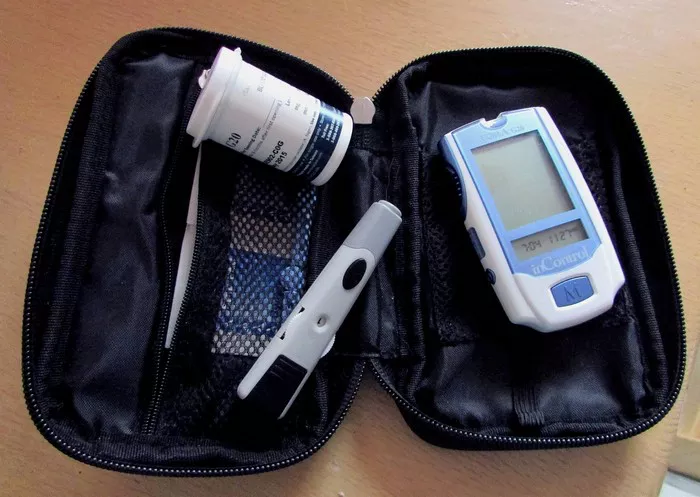Diabetes, a chronic condition characterized by elevated blood sugar levels, has become a global health concern. According to the International Diabetes Federation, approximately 537 million adults worldwide were living with diabetes in 2021, and this number is expected to rise to 784 million by 2045 if effective preventive measures are not implemented. While genetics and lifestyle factors play significant roles in diabetes development, diet remains one of the most influential factors in managing blood sugar levels and preventing the onset of diabetes. In this article, we will explore how dietary choices can impact diabetes risk and provide practical recommendations for incorporating foods that may help prevent diabetes while discussing those to avoid. Additionally, we will delve into dietary patterns, meal planning tips, and the importance of consulting healthcare professionals for personalized guidance.
Explanation of Diabetes Risk Factors
Before delving into specific dietary recommendations, it is crucial to understand how diet affects diabetes risk. Diabetes is a multifactorial disease influenced by various genetic, environmental, and lifestyle factors. Among these, diet plays a pivotal role. The foods we consume directly impact blood sugar levels, insulin sensitivity, and overall metabolic health.
Carbohydrates, particularly those with a high glycemic index (GI), can cause rapid spikes in blood sugar levels. When consumed in excess, foods high in refined carbohydrates and added sugars can strain the body’s ability to produce and respond to insulin, leading to insulin resistance and ultimately, type 2 diabetes. Conversely, foods rich in fiber, healthy fats, and antioxidants can help stabilize blood sugar levels, improve insulin sensitivity, and reduce inflammation, thereby lowering the risk of diabetes and its complications.
List of Beneficial Foods
Fatty Fish: Fatty fish, such as salmon, mackerel, and sardines, are excellent sources of omega-3 fatty acids. These essential fats have been associated with a reduced risk of chronic diseases, including heart disease and diabetes. Omega-3 fatty acids help decrease inflammation, improve insulin sensitivity, and support cardiovascular health.
Leafy Greens: Leafy greens like spinach, kale, and Swiss chard are nutritional powerhouses low in carbohydrates and calories but high in essential vitamins, minerals, and antioxidants. Their high fiber content slows down the digestion and absorption of carbohydrates, preventing rapid spikes in blood sugar levels.
Avocados: Avocados are rich in monounsaturated fats, which promote heart health and improve insulin sensitivity. Additionally, they are an excellent source of fiber, which aids in blood sugar regulation and promotes satiety, helping to control appetite and prevent overeating.
Nuts: Nuts, including almonds, walnuts, and pistachios, are packed with healthy fats, protein, fiber, and antioxidants. Regular nut consumption has been associated with improved glycemic control, weight management, and reduced risk of diabetes. However, portion control is essential due to their high calorie density.
Extra Virgin Olive Oil: Extra virgin olive oil is a staple of the Mediterranean diet, renowned for its numerous health benefits. Rich in monounsaturated fats and antioxidants, olive oil helps reduce inflammation, improve insulin sensitivity, and lower the risk of type 2 diabetes and cardiovascular disease.
Berries and Whole Fruits: Berries, such as blueberries, strawberries, and raspberries, are low in sugar and high in fiber and antioxidants, making them an ideal choice for blood sugar control. Whole fruits, including apples, oranges, and pears, provide natural sugars along with fiber, vitamins, and minerals, offering a nutritious alternative to processed sweets.
Legumes: Legumes, encompassing beans, lentils, and chickpeas, are rich in fiber, protein, and complex carbohydrates. Their low glycemic index and high nutrient content make them valuable components of a diabetes-friendly diet, helping to stabilize blood sugar levels and promote long-term health.
Foods to Avoid
In contrast to the beneficial foods mentioned above, certain dietary choices can increase the risk of diabetes and exacerbate existing symptoms. Foods high in added sugars, refined carbohydrates, and unhealthy fats should be limited or avoided to maintain optimal blood sugar control and overall health. Some examples include:
White Bread and Refined Grains: White bread, white rice, and other refined grains have undergone processing that strips away essential nutrients and fiber, leading to rapid spikes in blood sugar levels. Choosing whole grain alternatives like whole wheat bread, brown rice, and quinoa can help stabilize blood sugar and provide sustained energy.
Pastries and Sweet Treats: Pastries, cakes, cookies, and other sugary treats are loaded with refined sugars, unhealthy fats, and empty calories. Consuming these foods regularly can contribute to weight gain, insulin resistance, and an increased risk of diabetes and other chronic diseases. Opt for healthier alternatives like homemade fruit sorbets, yogurt parfaits, or dark chocolate with higher cocoa content.
Sugary Drinks: Sugary beverages, including soda, fruit juices, energy drinks, and sweetened teas, are major sources of added sugars and empty calories in the modern diet. Regular consumption of these beverages has been linked to weight gain, insulin resistance, and an elevated risk of type 2 diabetes. Choose water, herbal tea, or sparkling water with a splash of citrus for refreshing, hydrating options without added sugars.
Dietary Patterns
In addition to individual foods, dietary patterns play a crucial role in diabetes prevention and management. Two dietary patterns that have garnered significant attention for their protective effects against diabetes are the Mediterranean diet and plant-based diets.
Mediterranean Diet: The Mediterranean diet is inspired by traditional dietary patterns of countries bordering the Mediterranean Sea. It emphasizes whole foods such as fruits, vegetables, whole grains, legumes, nuts, seeds, fish, and olive oil while limiting red meat and processed foods. Numerous studies have shown that adherence to the Mediterranean diet is associated with a lower risk of type 2 diabetes, improved glycemic control, and reduced cardiovascular risk factors.
Plant-Based Diet: A plant-based diet focuses on whole plant foods such as fruits, vegetables, whole grains, legumes, nuts, and seeds while minimizing or excluding animal products. Plant-based diets are naturally rich in fiber, vitamins, minerals, and phytonutrients, promoting optimal health and reducing the risk of chronic diseases, including diabetes. Research suggests that plant-based diets may improve insulin sensitivity, reduce inflammation, and support healthy weight management.
Practical Tips for Meal Planning
Creating balanced, diabetes-friendly meals can be simple and enjoyable with the right strategies. Here are some practical tips for incorporating beneficial foods into your daily diet:
Build Meals Around Non-Starchy Vegetables: Fill half your plate with non-starchy vegetables like leafy greens, broccoli, cauliflower, bell peppers, and tomatoes. These vegetables are low in calories and carbohydrates but rich in fiber, vitamins, and minerals.
Include Lean Protein Sources: Incorporate lean protein sources such as grilled chicken, fish, tofu, tempeh, or legumes into your meals to promote satiety and stabilize blood sugar levels.
Choose Whole Grains: Opt for whole grains like quinoa, brown rice, oats, barley, and whole wheat pasta instead of refined grains to increase fiber intake and slow down the absorption of carbohydrates.
Snack Smartly: Keep healthy snacks on hand, such as raw vegetables with hummus, Greek yogurt with berries, or a handful of nuts, to prevent hunger and avoid reaching for unhealthy options.
Experiment with Herbs and Spices: Enhance the flavor of your meals with herbs and spices like garlic, ginger, turmeric, cinnamon, and rosemary, which not only add depth to dishes but also offer potential health benefits.
Consultation with Healthcare Professionals
While incorporating diabetes-friendly foods into your diet is a positive step towards prevention, it’s essential to seek guidance from healthcare professionals for personalized advice. A registered dietitian can help you develop a tailored meal plan that meets your individual nutritional needs, preferences, and health goals. Additionally, consulting with a healthcare provider for regular check-ups and monitoring of blood sugar levels is crucial for early detection and management of diabetes.
Lifestyle Considerations
In addition to dietary modifications, lifestyle factors such as regular physical activity and weight management play integral roles in diabetes prevention and management. Aim for at least 150 minutes of moderate-intensity exercise per week, such as brisk walking, swimming, or cycling, to improve insulin sensitivity, promote weight loss, and enhance overall health. Additionally, maintaining a healthy weight through a balanced diet and regular exercise can reduce the risk of developing type 2 diabetes and its complications.
Conclusion
In conclusion, adopting a nutritious diet rich in fatty fish, leafy greens, avocados, nuts, olive oil, berries, whole fruits, and legumes while avoiding foods high in added sugars and refined carbohydrates is key to preventing diabetes and promoting overall health. Embracing dietary patterns such as the Mediterranean diet or a plant-based diet, along with practical meal planning strategies and guidance from healthcare professionals, can empower individuals to take control of their health and reduce their risk of diabetes. By prioritizing healthy eating habits, regular physical activity, and holistic lifestyle choices, we can work together to combat the growing epidemic of diabetes and improve the well-being of individuals worldwide.
Related topics
- Best wheat for diabetes
- What is the best way to treat low blood sugar?
- Are plant based diets good for diabetics?



























